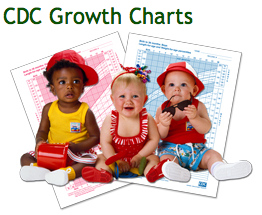|

CLICK ON weeks 0 - 40 and follow along every 2 weeks of fetal development
|
||||||||||||||||||||||||||||
|
Developmental biology - Female Fertility Fast food diet slows down fertility Fast foods included burgers, pizza, fried chicken and chips that were bought from take-away or fast food outlets. Fast foods eaten at home (bought from supermarkets, for example) were not included in the data collected and so consumption of this type of food is likely to be under-reported. Couples were excluded from the analysis if they were receiving fertility treatment due to the male partner's infertility. Grieger: "Most of the women did not have a history of infertility. We adjusted the relationships with pre-pregnancy diet to take account of several factors known to increase the risk of infertility, including elevated body mass index [BMI] and maternal age, smoking and alcohol intake. As diet is a modifiable factor, our findings underscore the importance of considering preconception diet to support timely conception for women planning pregnancy." Researchers also found that while intake of fruit and fast foods affected time to pregnancy, pre-pregnancy intake of green leafy vegetables or fish did not. Study limitations include that information on pre-pregnancy diet relied on women's recall and included a limited range of foods. Information on the fathers' diet was not collected, and it is possible that other, unknown factors might have affected the results. The study's major strength is the large group of women included. "For any dietary intake assessment, one needs to use some caution regarding whether participant recall is an accurate reflection of dietary intake. However, given that many women do not change their pre-pregnancy diet to another diet during pregnancy, we believe women's recall of their diet one month prior to pregnancy is likely to be reasonably accurate," adds Grieger. The researchers are continuing their study and plan to identify particular dietary patterns, rather than individual food groups, that may be associated with how long it takes women to become pregnant. Abstract STUDY QUESTION Is preconception dietary intake associated with reduced fecundity as measured by a longer time to pregnancy (TTP)? SUMMARY ANSWER Lower intake of fruit and higher intake of fast food in the preconception period were both associated with a longer TTP. WHAT IS KNOWN ALREADY Several lifestyle factors, such as smoking and obesity, have consistently been associated with a longer TTP or infertility, but the role of preconception diet in women remains poorly studied. Healthier foods or dietary patterns have been associated with improved fertility, however, these studies focused on women already diagnosed with or receiving treatments for infertility, rather than in the general population. Authors: Jessica A Grieger Luke E Grzeskowiak Tina Bianco-Miotto Tanja Jankovic-Karasoulos Lisa J Moran Rebecca L Wilson Shalem Y Leemaqz Lucilla Poston Lesley McCowan Louise C Kenny Jenny Myers James J Walker Robert J Norman Gus A Dekker Claire T Roberts Return to top of page | May 7, 2018 Fetal Timeline Maternal Timeline News News Archive  Study findings show eating a good quality diet which includes fruit — and minimising fast foods — improves fertility, reducing the time it takes to get pregnant. Image credit: public domain.
|
||||||||||||||||||||||||||||

